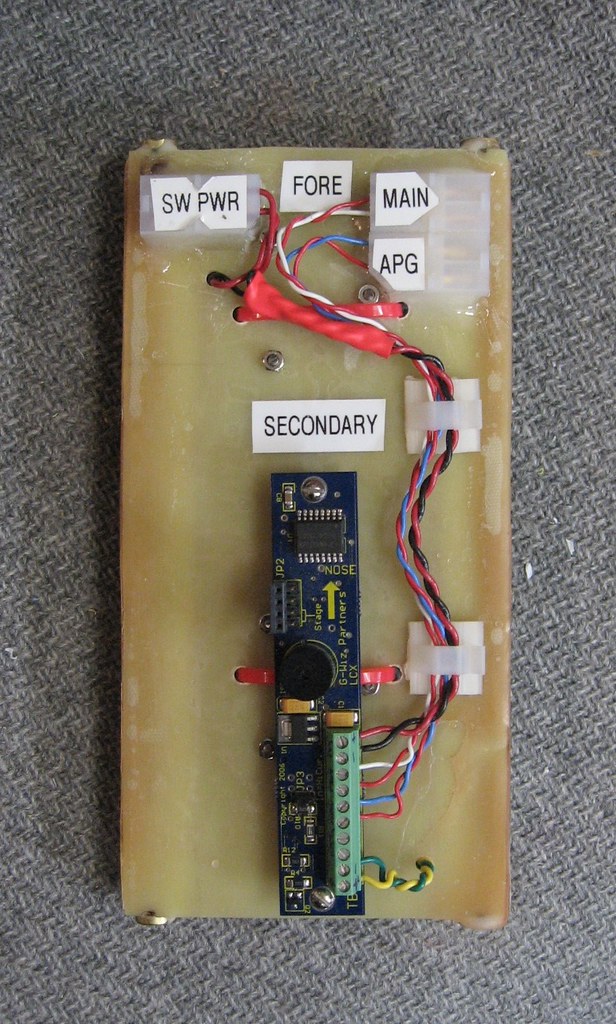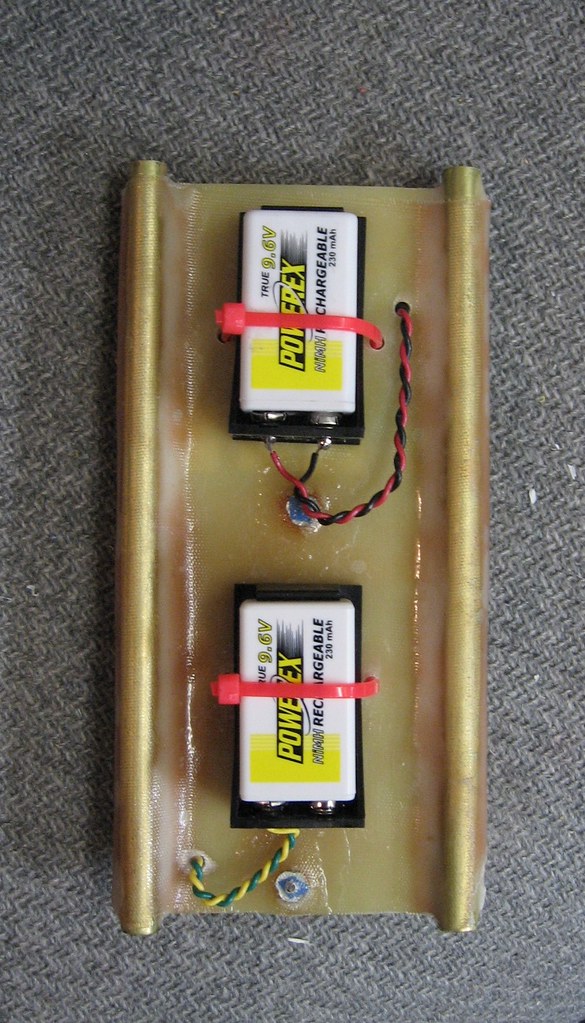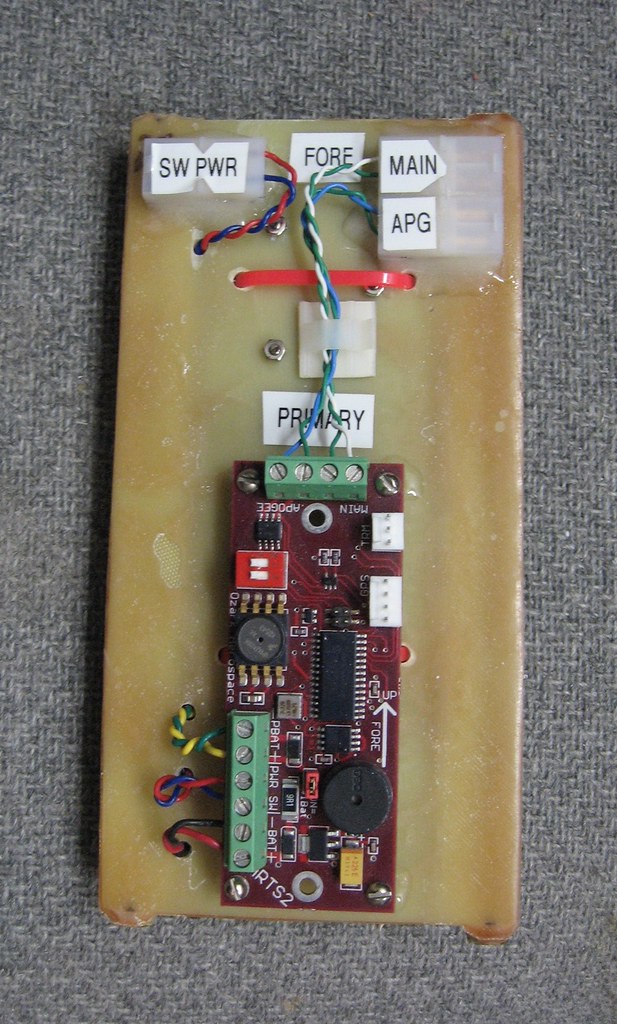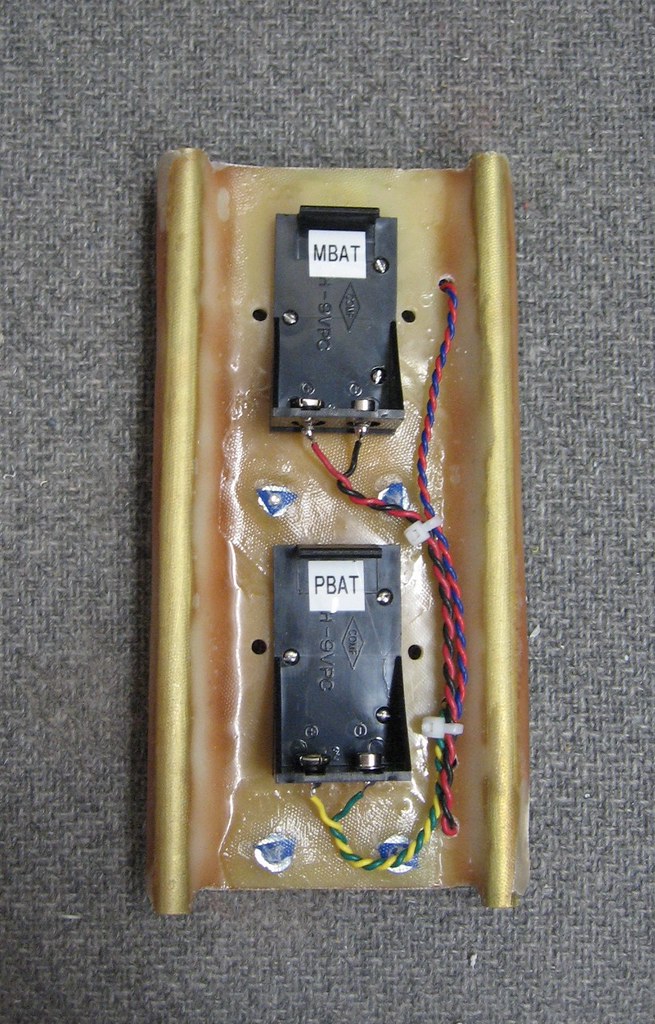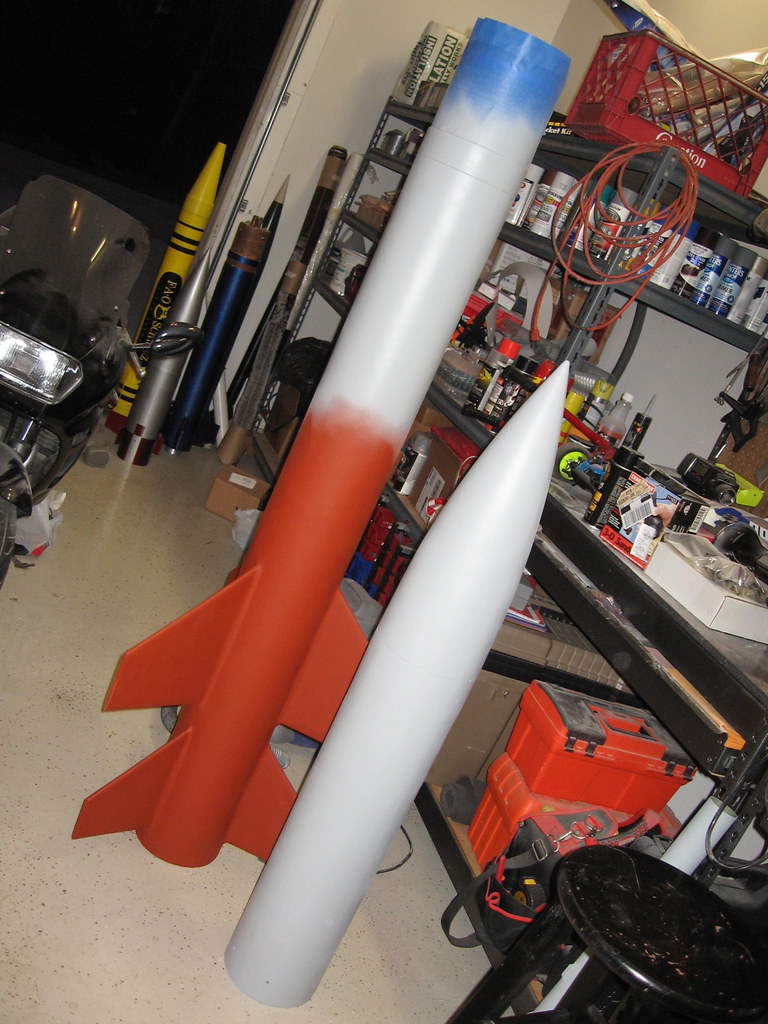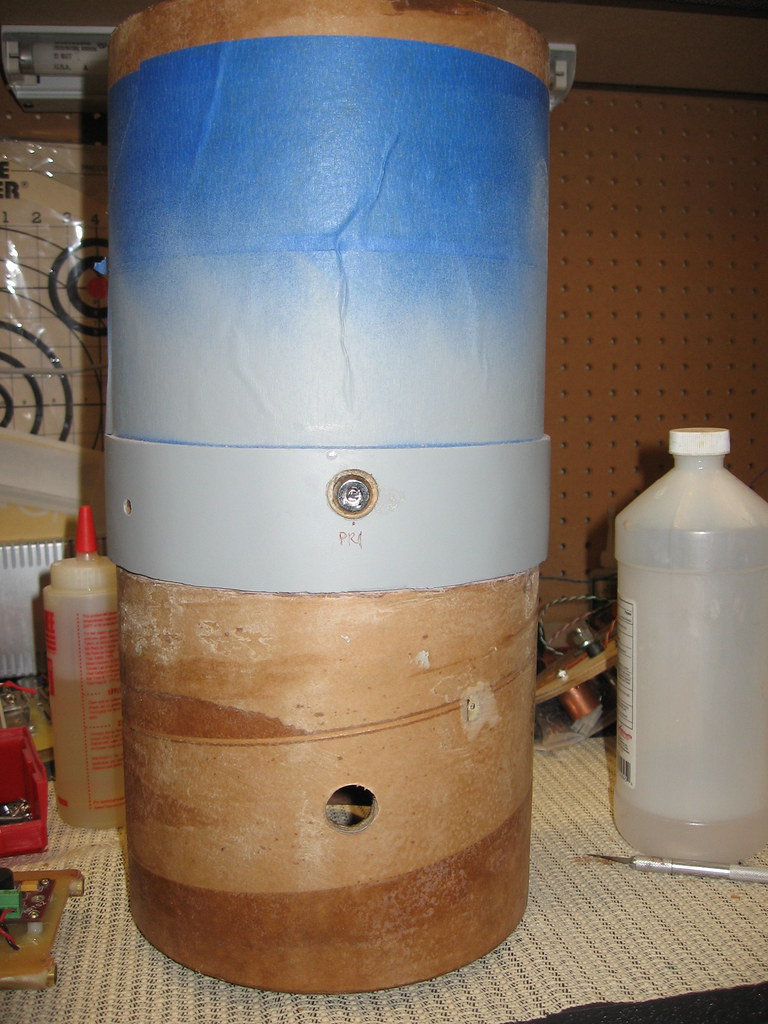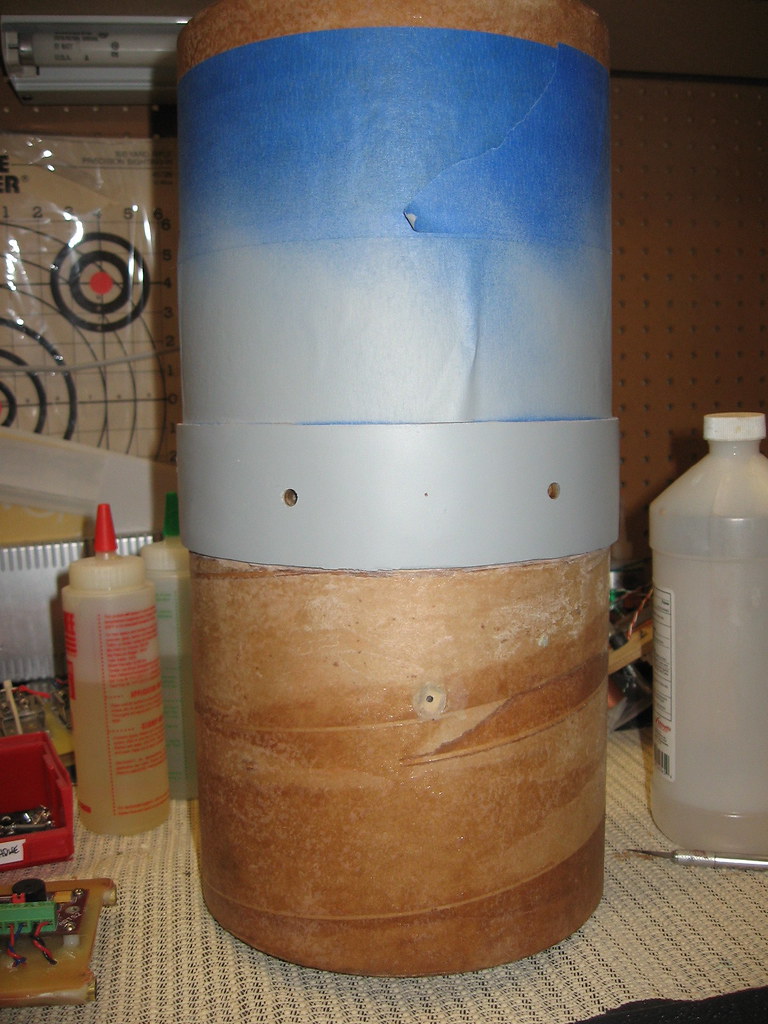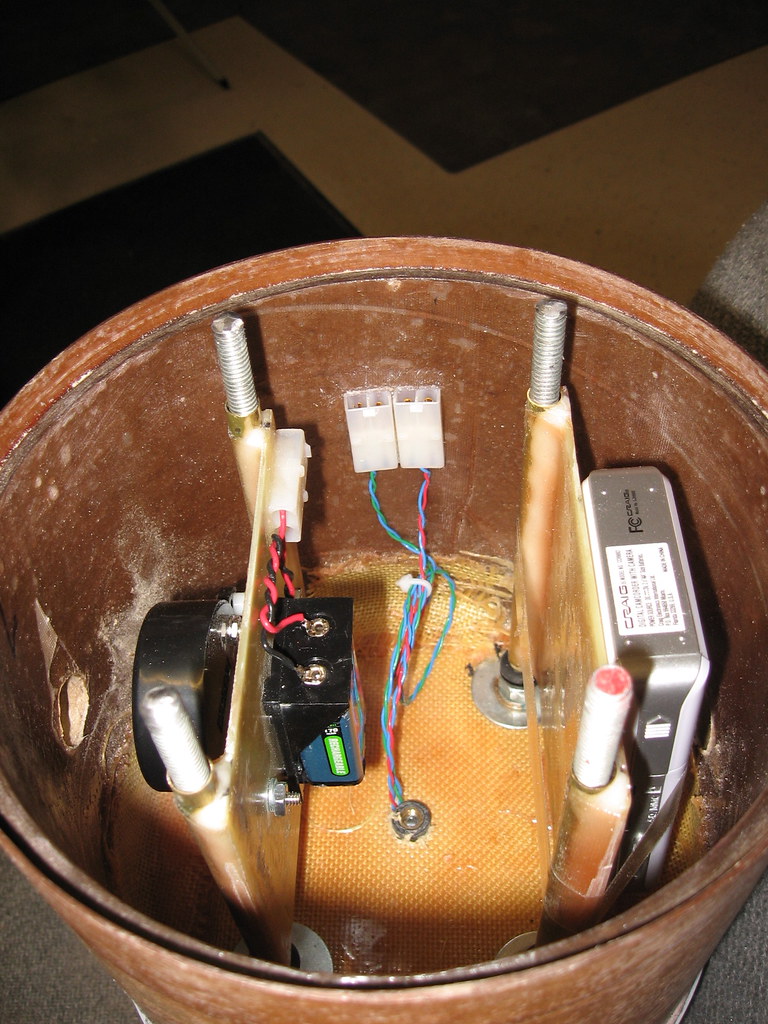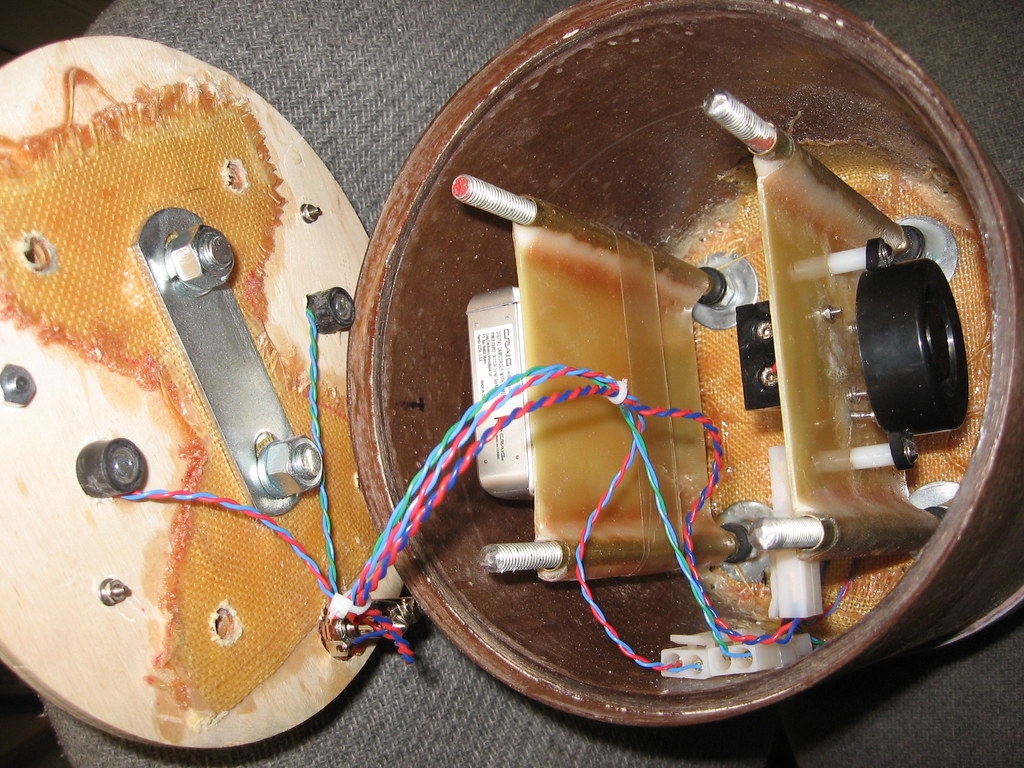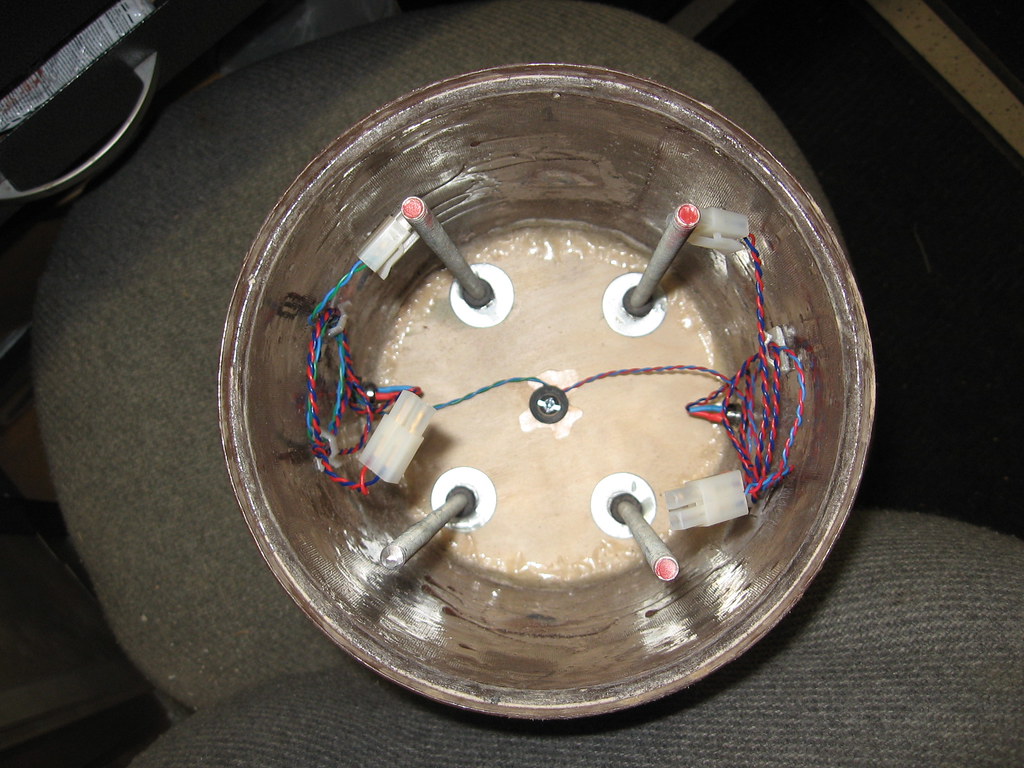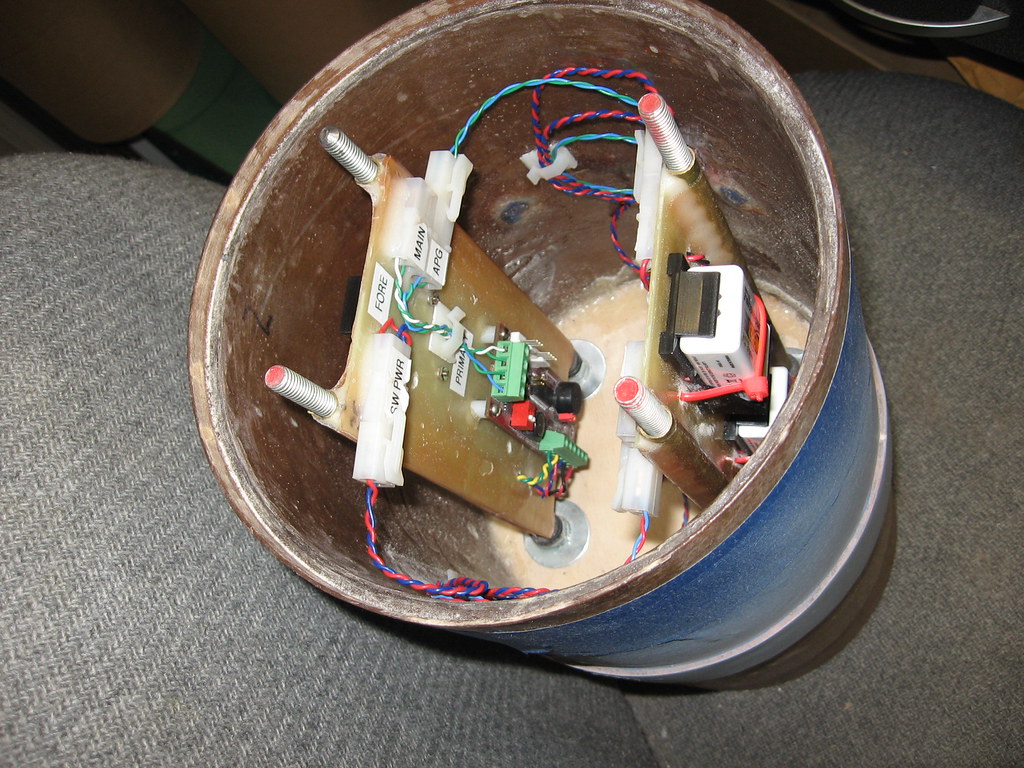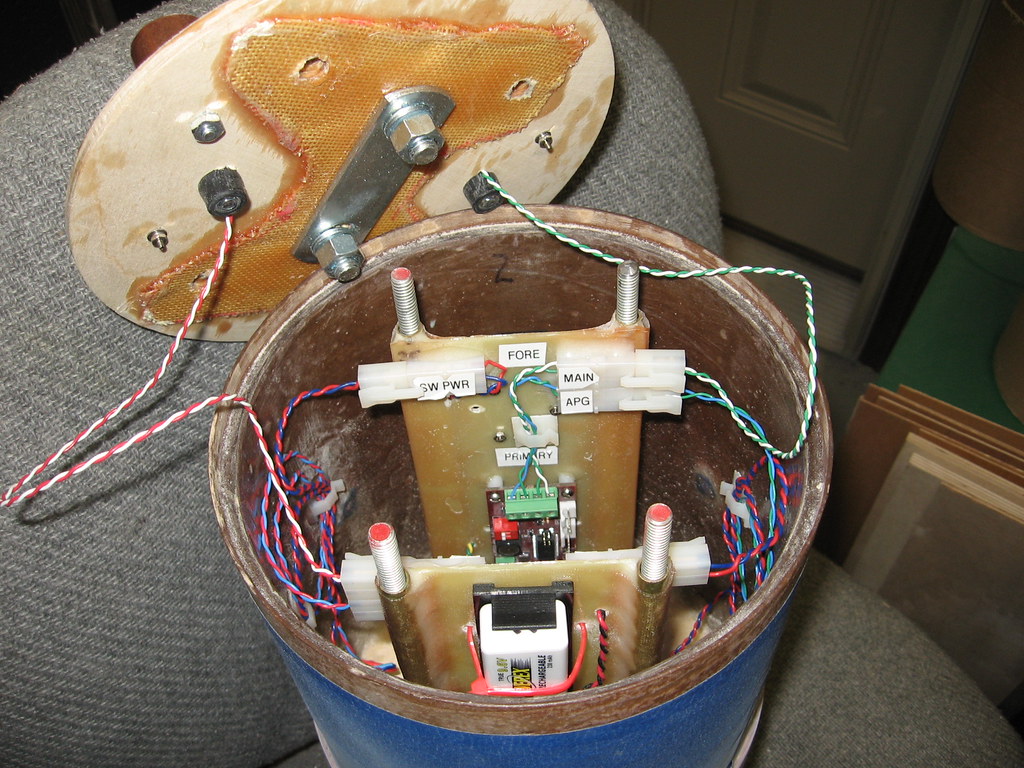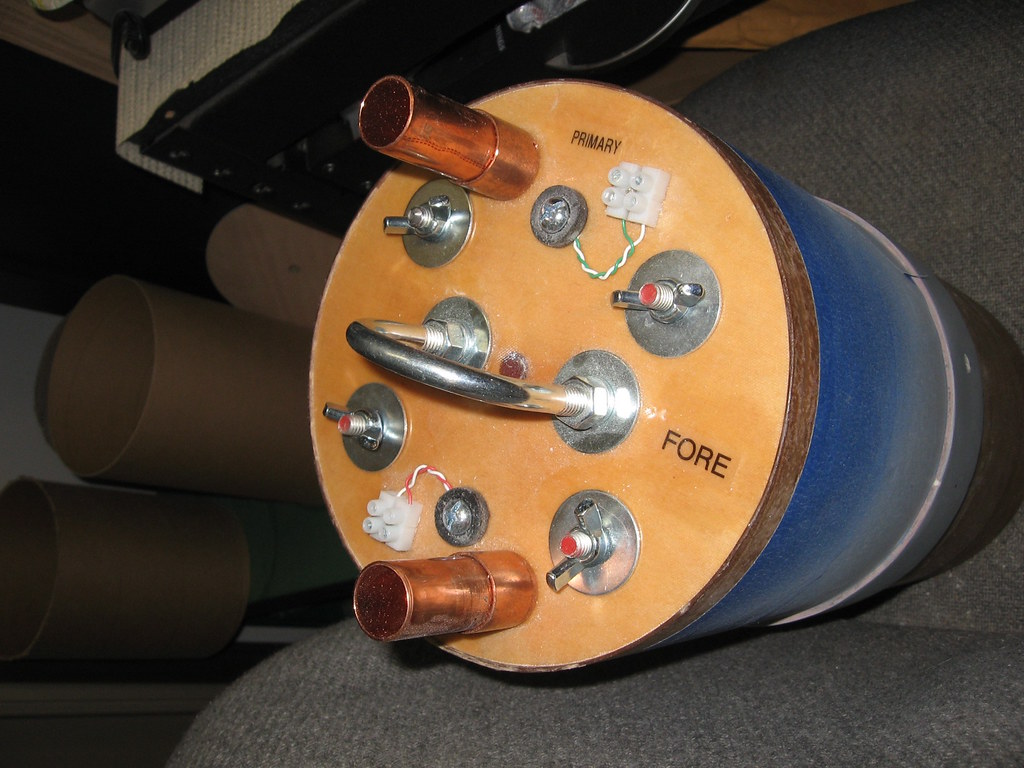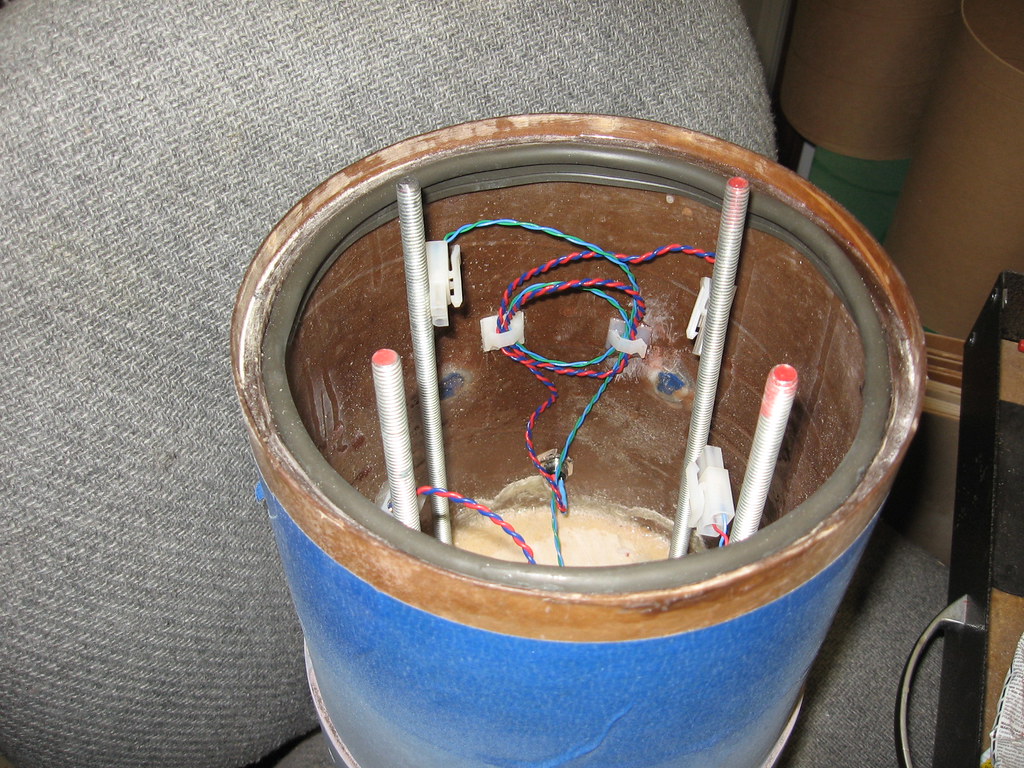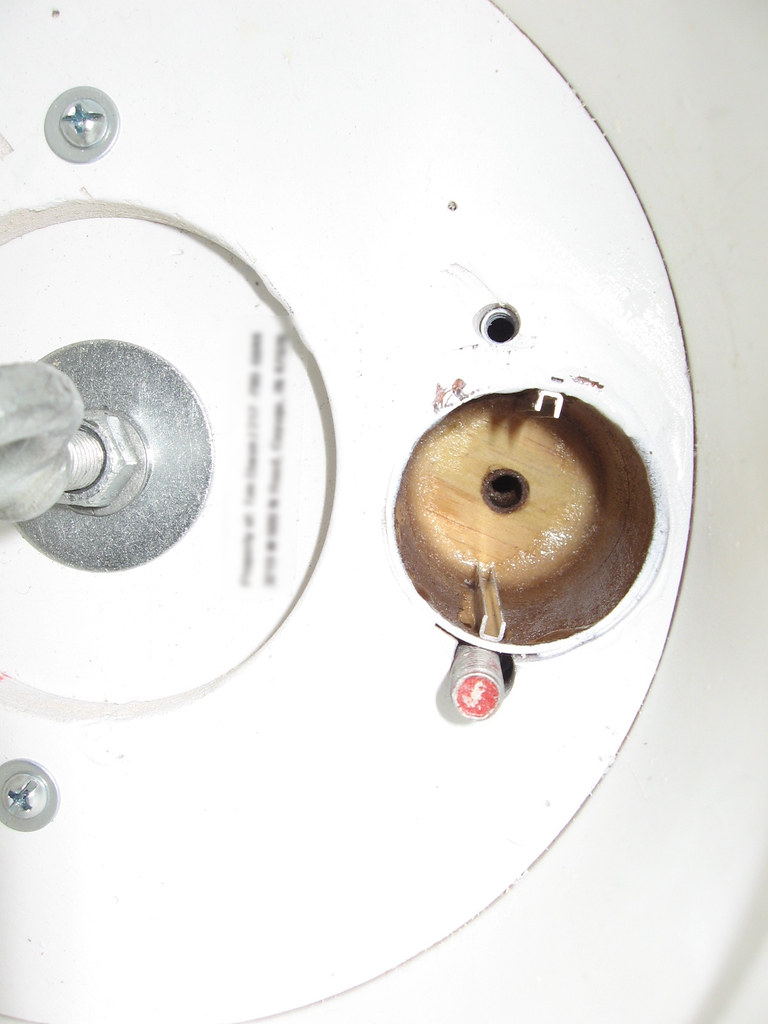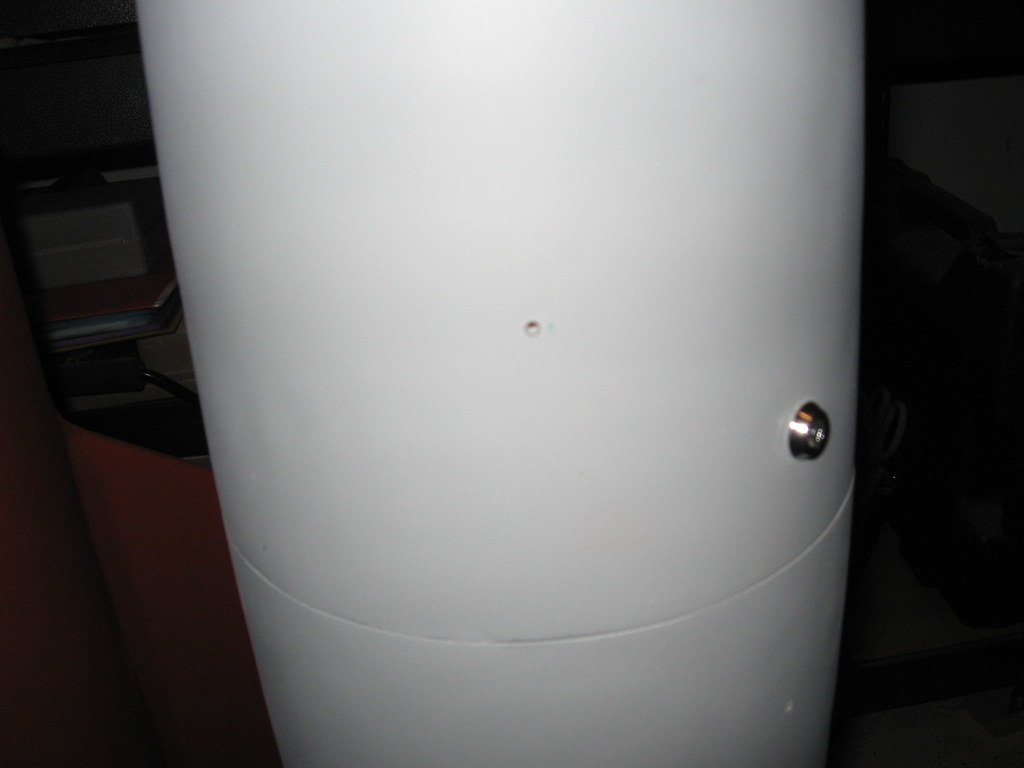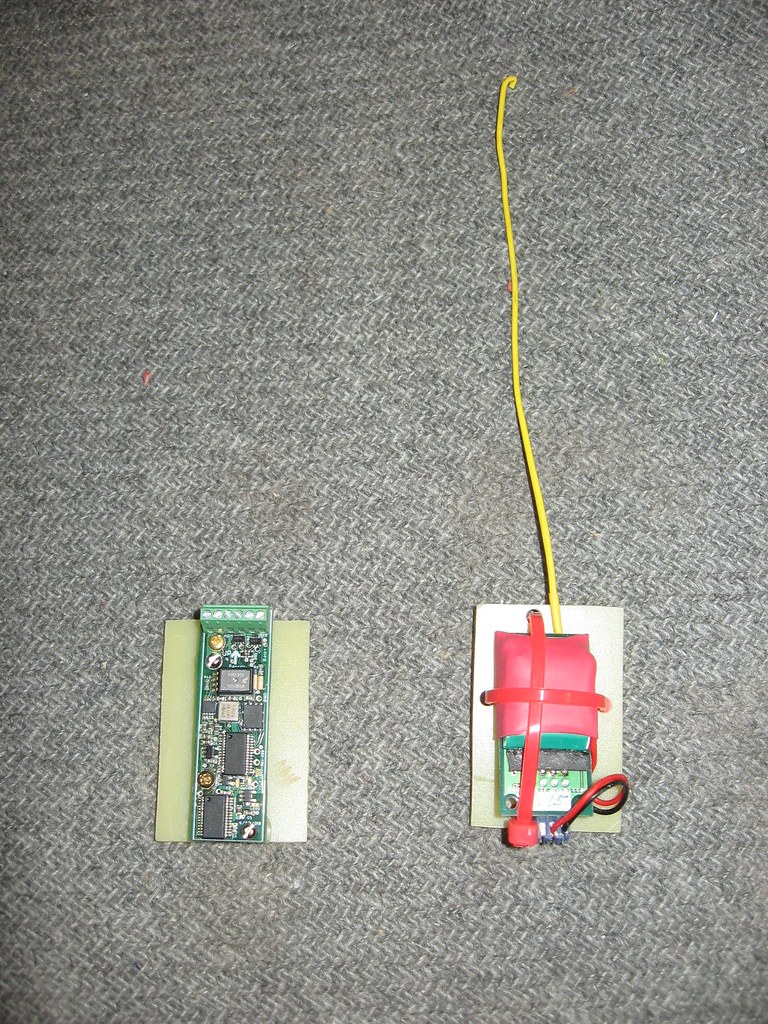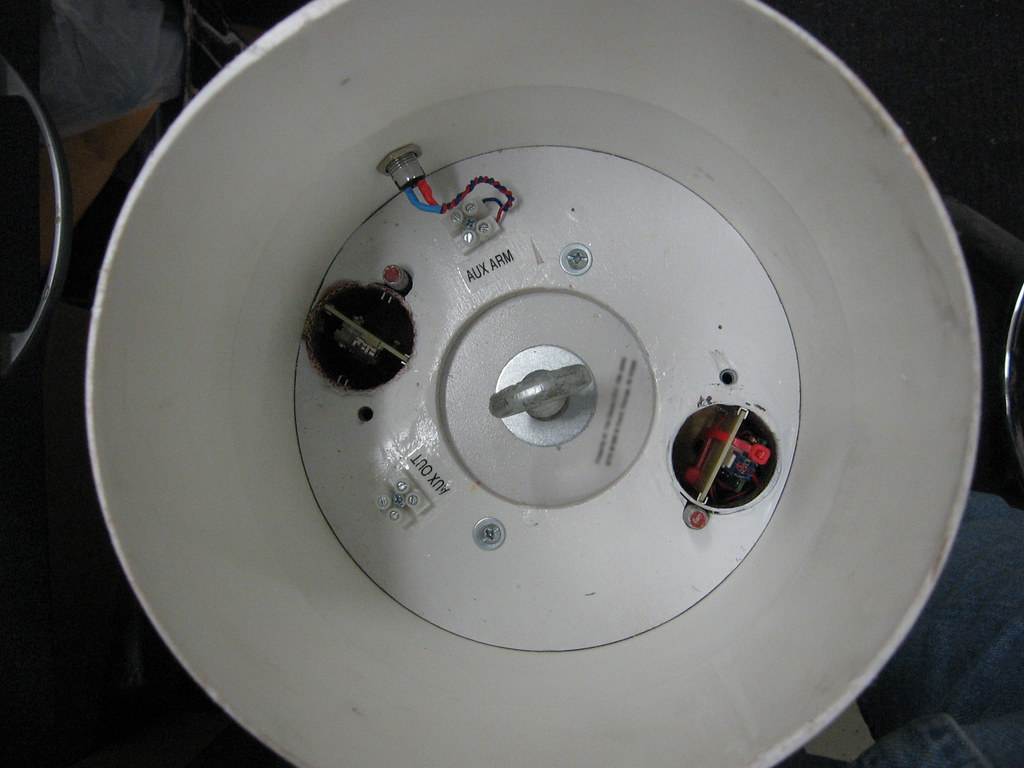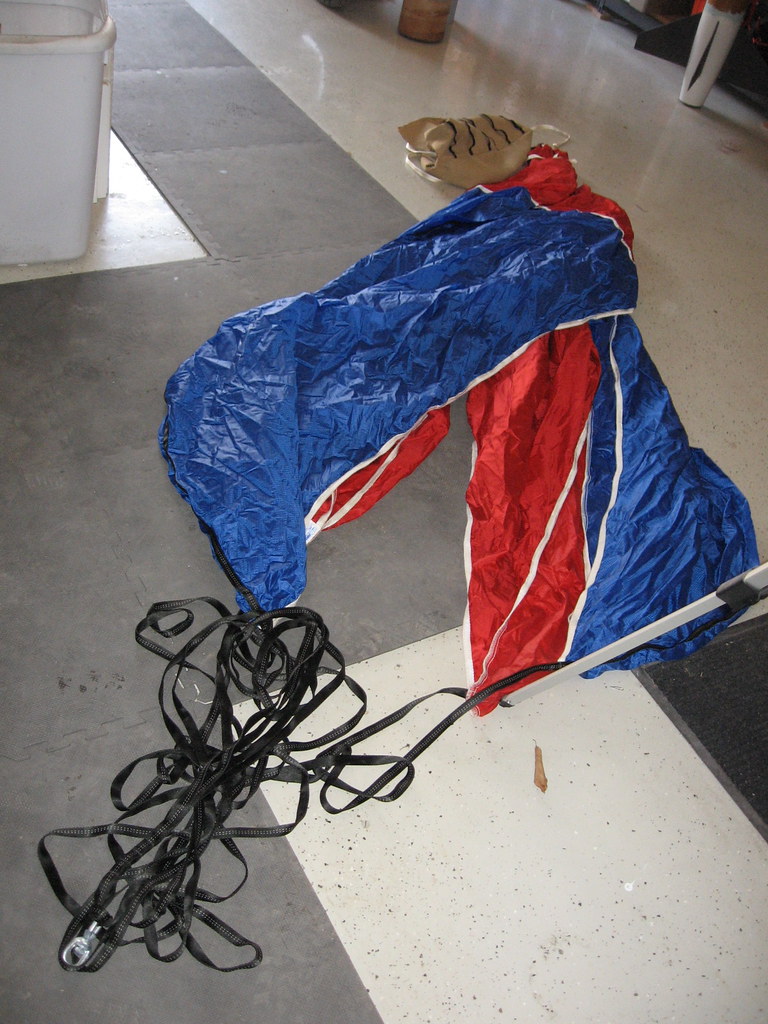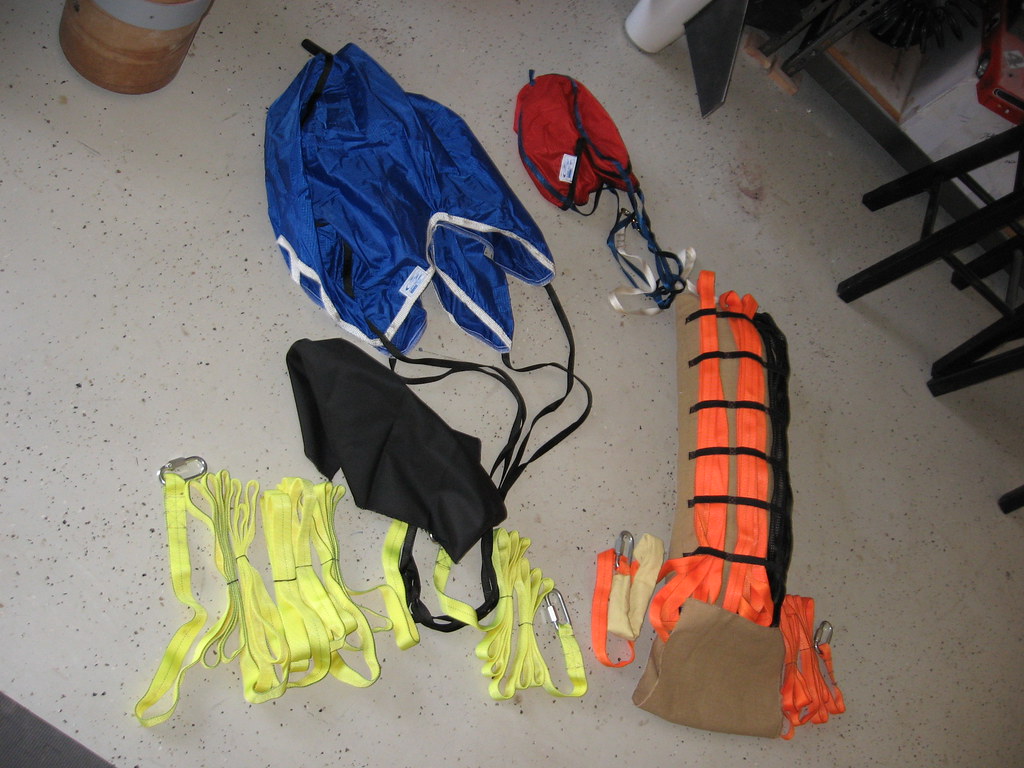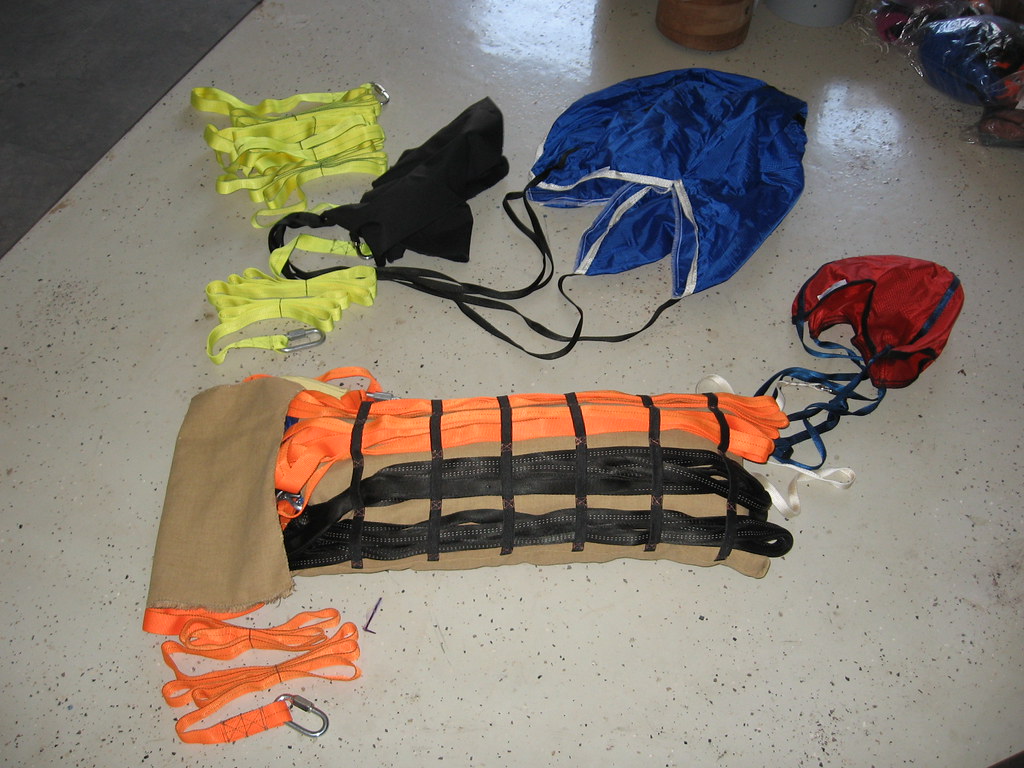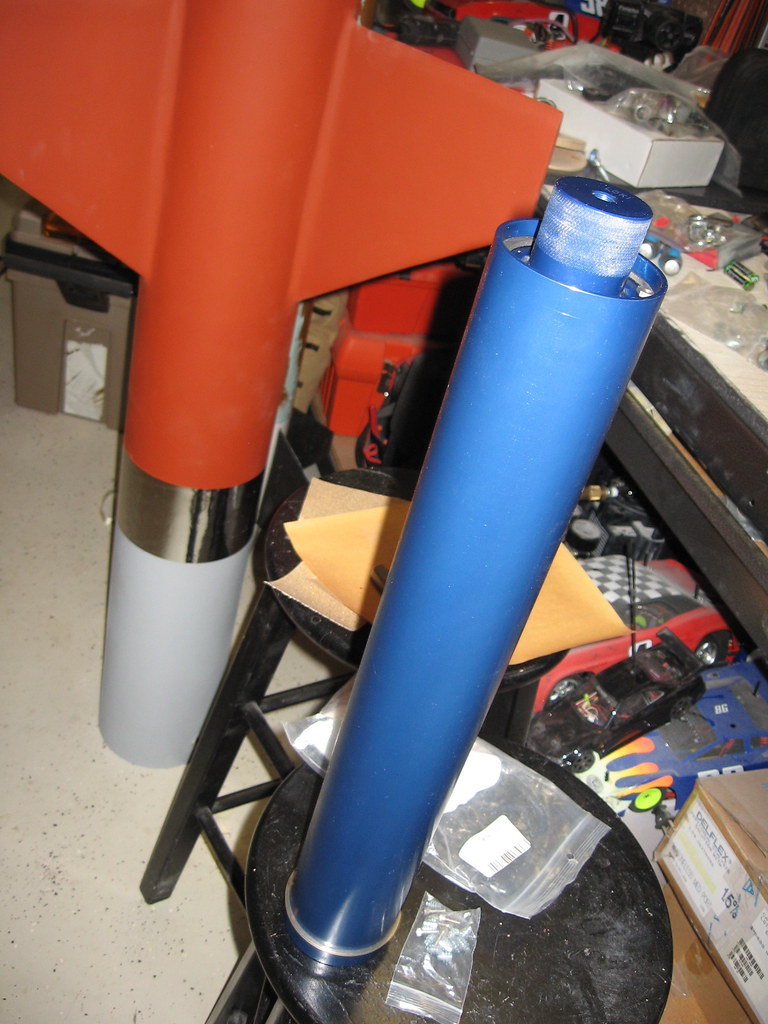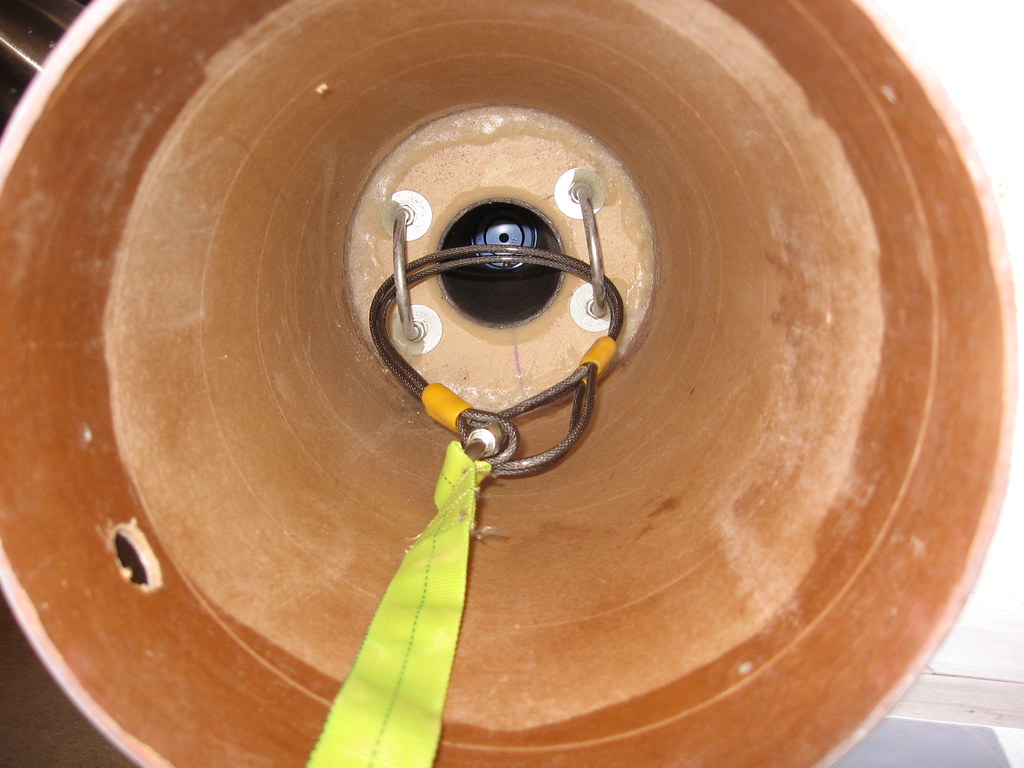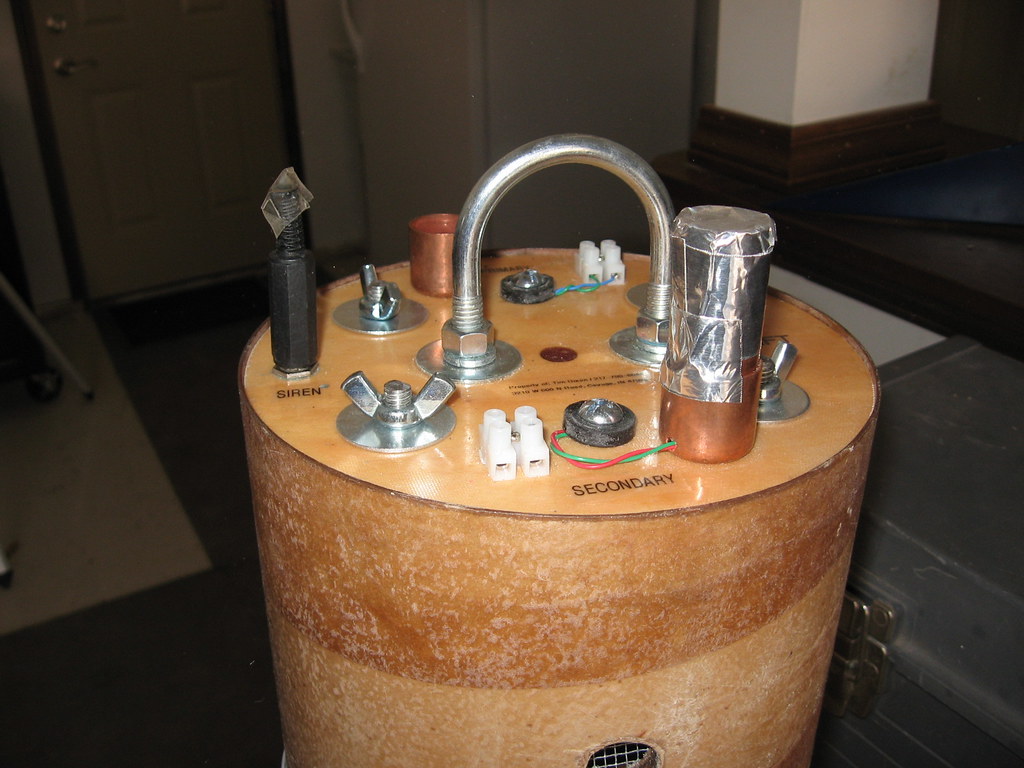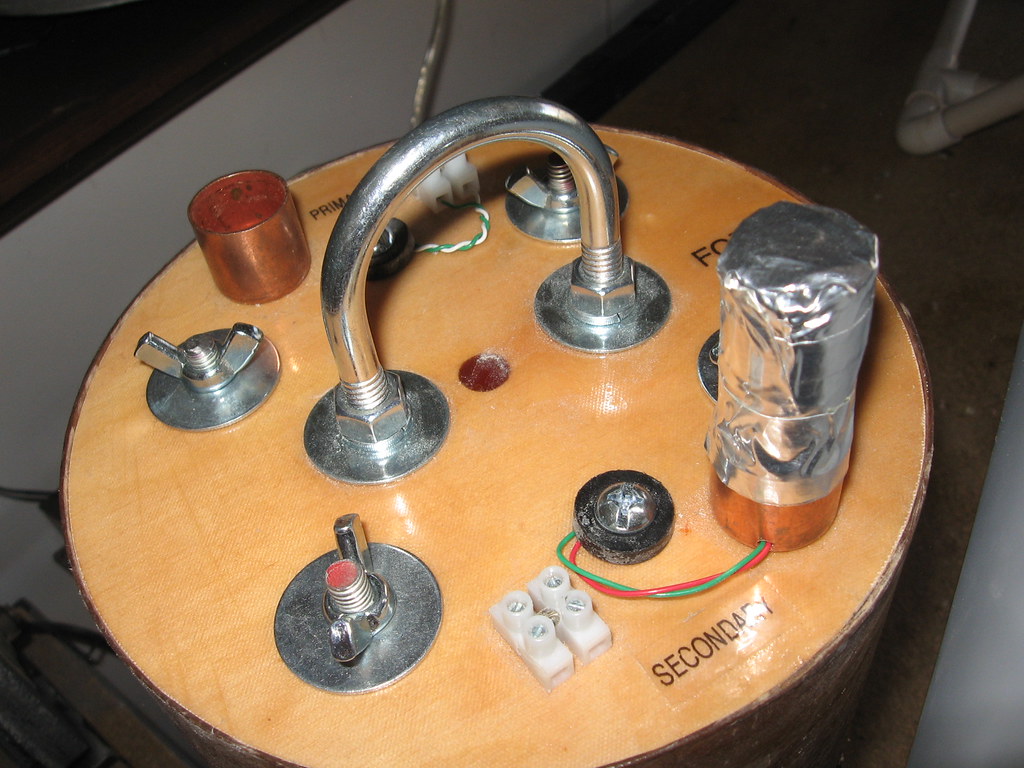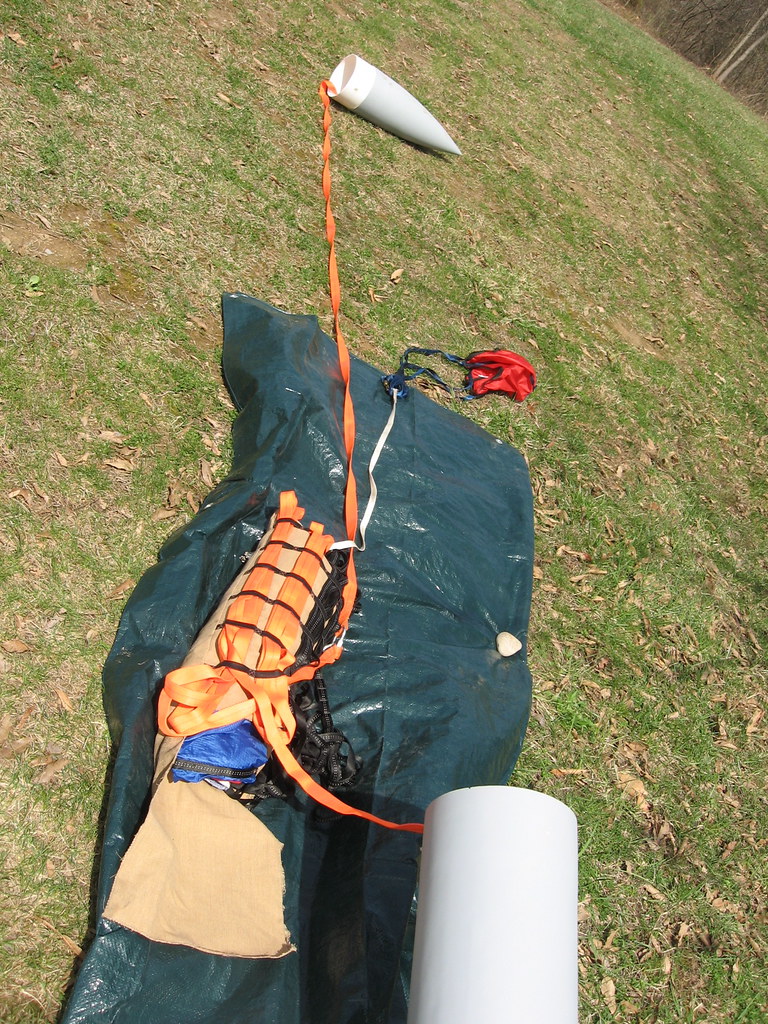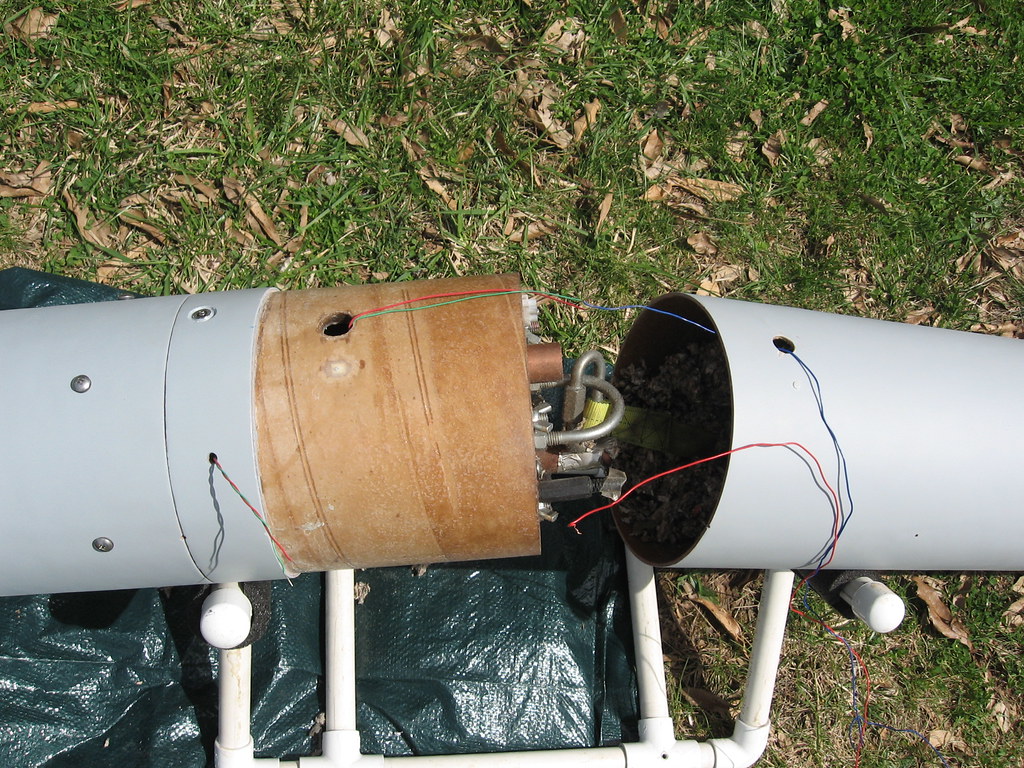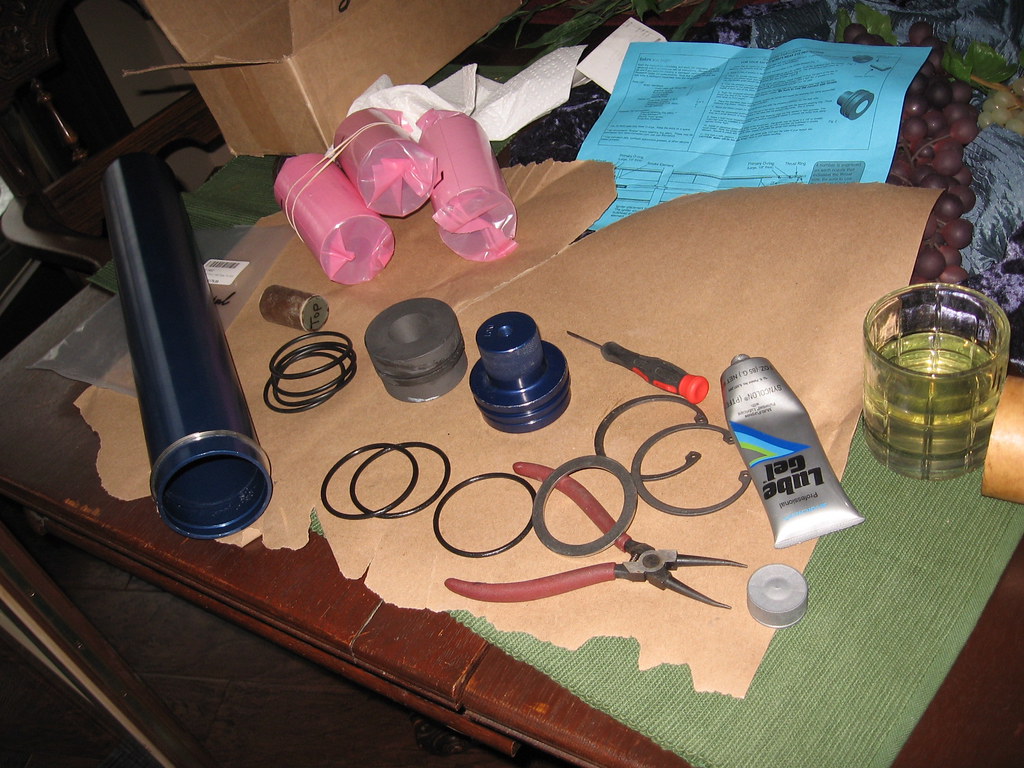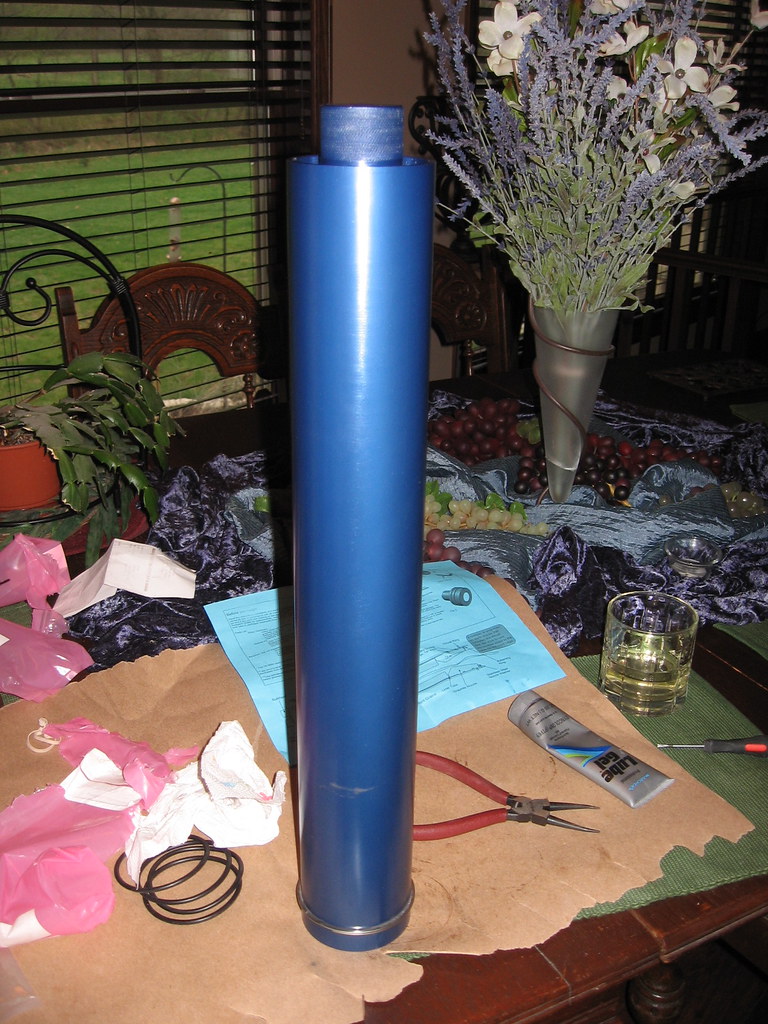O.K., I think I have this worked out, but frankly I'm a novice at YouTube and I can't seem to get the quality from the upload that I have locally on my computer--don't know if its the resolution or the format or what (I'm certainly open to help and suggestions here)?
In any case here are snippets of the ground testing. Based on the calculation in
the design doc (page 14 of this older version of documentation), I was to use 4.5g and 2.25g of Triple 7 for the main and apogee charge respectively. For convenience sake with my measuring tools I just used 5.0g and 2.5g. As it turns out (and you'll see in the video) is that the main charge was great, the 2.5g "possibly" good. I say possibly because I made an error in set up and testing which I'll share after the video. But what you'll see in the video is a apogee charge of 4.0g and a minimal separation (not surprising given the weight of both sections on the stand, but also due the error in my set up). In any case, here's the test (Note: the ugly purple tape in the middle of the rocket is there to protect the chrome monocote during testing on the stand):
[YOUTUBE]PgsAJcItdBY[/YOUTUBE]
Looking at the still shot of the main separation from a different angle shows how well the spacing occurred. The nosecone is about 20 feet out, the pilot chute popped well away from the deployment bag; with the d-bag being a couple of feet from the airframe. So, all-in-all, I'm calling this good and will go with 5.0g main charge with 6.0g main backup charge.
As is clear in the video, the apogee charge did not separate with as much vigor as the main event. I believe there is one big reason, but two other smaller reasons for this. First the smaller reasons... In my design document, I neglected just how full the main compartment would be and, conversely, just how sparsely filled the apogee compartment would be. Second (small reason) is that I also ignored the MMT. With the 76-3600 motor installed there is more than half of the 40" MMT left open. Thus both the above lead to the need for more force/pressurization.
But the real (big) reason is my screwup. In setting up the test, I didn't have e-matches with leads long enough to thread through the aft section of the av-bay, the center access point and back out the vent holes. Actually I do have e-matches with leads long enough, but I didn't want to burn through my e-matches so I used some homemade initiators. In any case, dummy me, I just fished the leads through the camera window/hole in the bottom section of the av-bay thinking in my mind that the twist wires would just separate as the airframe separates. DUH! As can be seen in the picture below, upon separation the leads had to actually be pulled on the outside of the coupler and of course adding two 22 gauge wires between a coupler and a BT makes it tight as heck (as I verified afterwards)! Well the good news is that 4.0 grams is more than enough to achieve separation, in fact, in real life it will likely be a vigorous separation--that's O.K. Better safe than sorry, so I'll stick with the 4.




